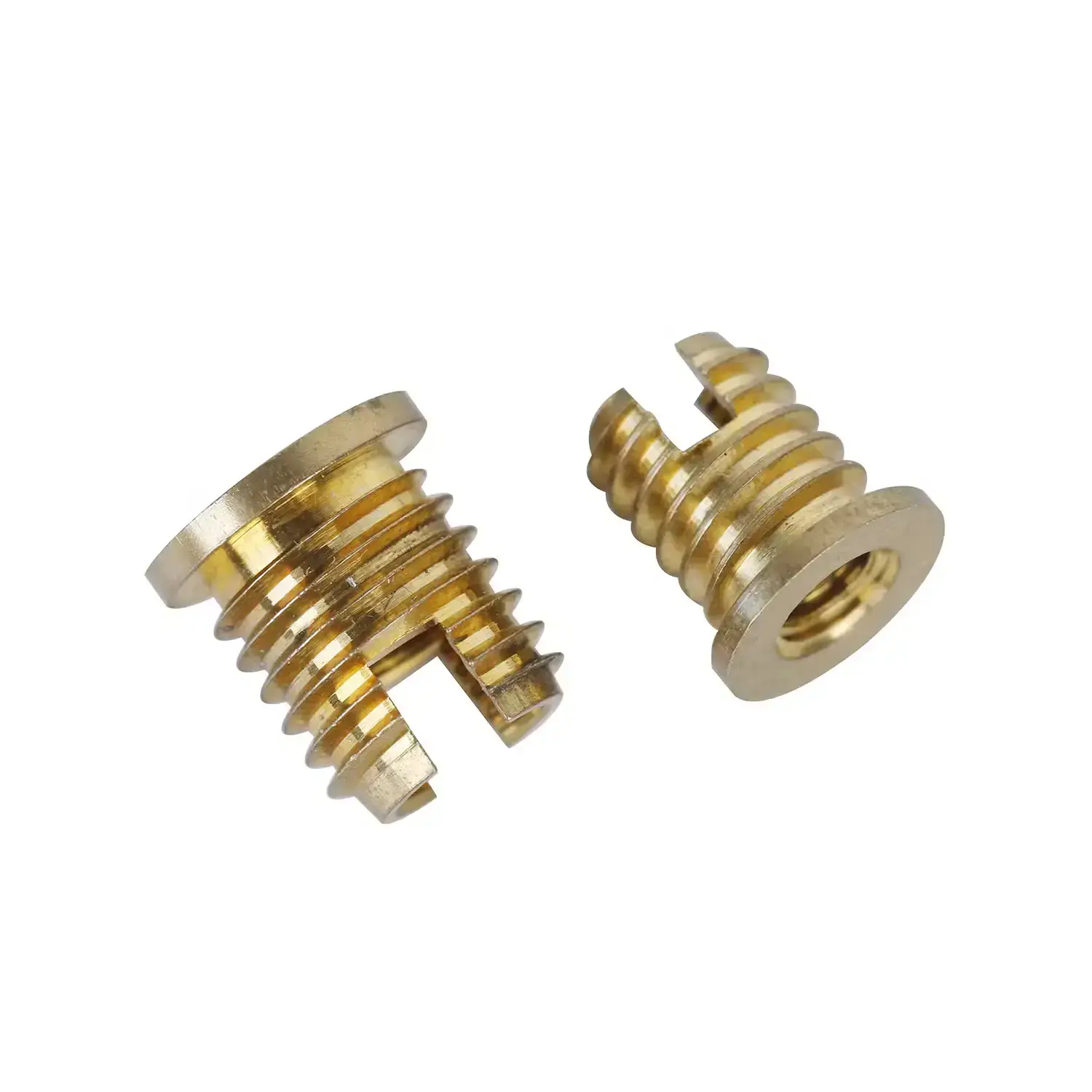M6 Insert Nuts: How to Select, Install, and Troubleshoot
Understanding M6 Insert Nuts and Their Specifications
M6 insert nuts come in different materials and finishes, each offering unique benefits. Common materials include:
- Steel: Known for its strength and durability.
- Stainless Steel: Provides excellent corrosion resistance.
- Aluminum-Based Alloys: Lighter and more flexible.
These nuts are also available in different surface treatments, such as:
- Heat Treatment: Enhances hardness and durability.
- Coatings: Provide additional protection against corrosion and wear.
When comparing M6 insert nuts to other fasteners, their strength-to-weight ratio and precision threading make them ideal for applications requiring reliability and efficiency. For example, stainless steel M6 insert nuts are a popular choice in marine environments due to their corrosion resistance, while steel ones are preferred in high-stress industrial settings.
How to Select the Right M6 Insert Nut

Choosing the right M6 insert nut depends on the specific requirements of your application. Here are some key considerations:
- Load Capacity: M6 insert nuts have a specified torque range. Ensure the nut can handle the required load to avoid premature failure.
- Environmental Factors: Consider the temperature range, moisture exposure, and corrosive elements in your environment. Stainless steel or coated nuts may be necessary for harsh conditions.
- Vibration Resistance: High-stress applications require nuts with higher strength grades. For example, a Grade 8 nut can better withstand vibrations and thermal changes.
- Thread Engagement: Ensure the nut is compatible with the mating threads to avoid loose connections or stripping.
A recent case study highlights the importance of proper selection. A factory faced frequent failures in a machine due to using M8 nuts instead of M6 in a high-torque application. This switch not only failed to meet the torque requirements but also caused unnecessary wear and tear on the machine. Always choose nuts that are specifically designed for your application to ensure reliable performance.
Installation Techniques for M6 Insert Nuts
Installing M6 insert nuts correctly is crucial for their performance and longevity. Heres a step-by-step guide, along with an explanation of each step:
1. Preparation:
- Clean the Threads: Ensure the threads are free of dirt, debris, or old lubricant. Use a clean cloth or compressed air to remove any contaminants.
- Inspect the Nut: Check the nut for any signs of wear, deformation, or damage. A damaged nut can cause improper engagement and increase the risk of failure.
2. Assembly:
- Apply Lubricant: A thin layer of appropriate lubricant (such as molybdenum disulfide or grease) can help reduce friction and make assembly easier.
- Thread the Nut: Place the nut onto the bolt, ensuring it is properly aligned with the threads. Use a torque wrench to tighten the nut to the specified torque value.
The torque value is critical as under-tightening can lead to loose connections, while overtightening can strip the threads or deform the nut. Always use a torque wrench to ensure consistent and accurate tightening.
Troubleshooting Common Issues with M6 Insert Nuts
Proper troubleshooting can prevent costly repairs and downtime. Here are some common issues and their solutions:
1. Improper Threading:
- Cause: Misaligned threads or dirty threads.
- Solution: Clean the threads with a thread cleaner or use a thread starter to ensure proper engagement.
2. Insufficient Tightening:
- Cause: Inconsistent torque application or worn-out torque wrench.
- Solution: Recheck the torque application using a calibrated torque wrench. If necessary, reapply the correct torque.
3. Stripping:
- Cause: Over-tightening or insufficient lubrication.
- Solution: Replace the damaged nut with a new one and ensure proper lubrication during assembly.
For example, a machine operator noticed that some M6 insert nuts were frequently stripping. Upon investigation, it was found that the torque wrench was not calibrated correctly, and the bolts were not properly lubricated. By recalibrating the torque wrench and applying a thin layer of lubricant, the issue was resolved.
Proper Maintenance and Longevity of M6 Insert Nuts
Maintaining M6 insert nuts can significantly extend their lifespan. Here are some key practices:
1. Regular Inspections:
- Frequency: Inspect the nuts every six months for signs of wear, corrosion, or loose connections.
- Inspection Methods: Use a visual inspection to look for dents, cracks, or stripped threads. A tap test can also help identify loose nuts.
2. Lubrication:
- Frequency: Lubricate the nuts annually to reduce friction and prevent wear.
- Types of Lubricants: Use molybdenum disulfide, grease, or oil, depending on the application.
3. Replacement Guidelines:
- Frequency: Replace nuts based on the manufacturers guidelines. Generally, replace nuts after a certain number of operational cycles or if they show signs of wear.
For instance, in an industrial setting, regular inspections and timely lubrication can save thousands in maintenance costs and downtime. By following these steps, you can ensure that your M6 insert nuts remain reliable and functional for years to come.
